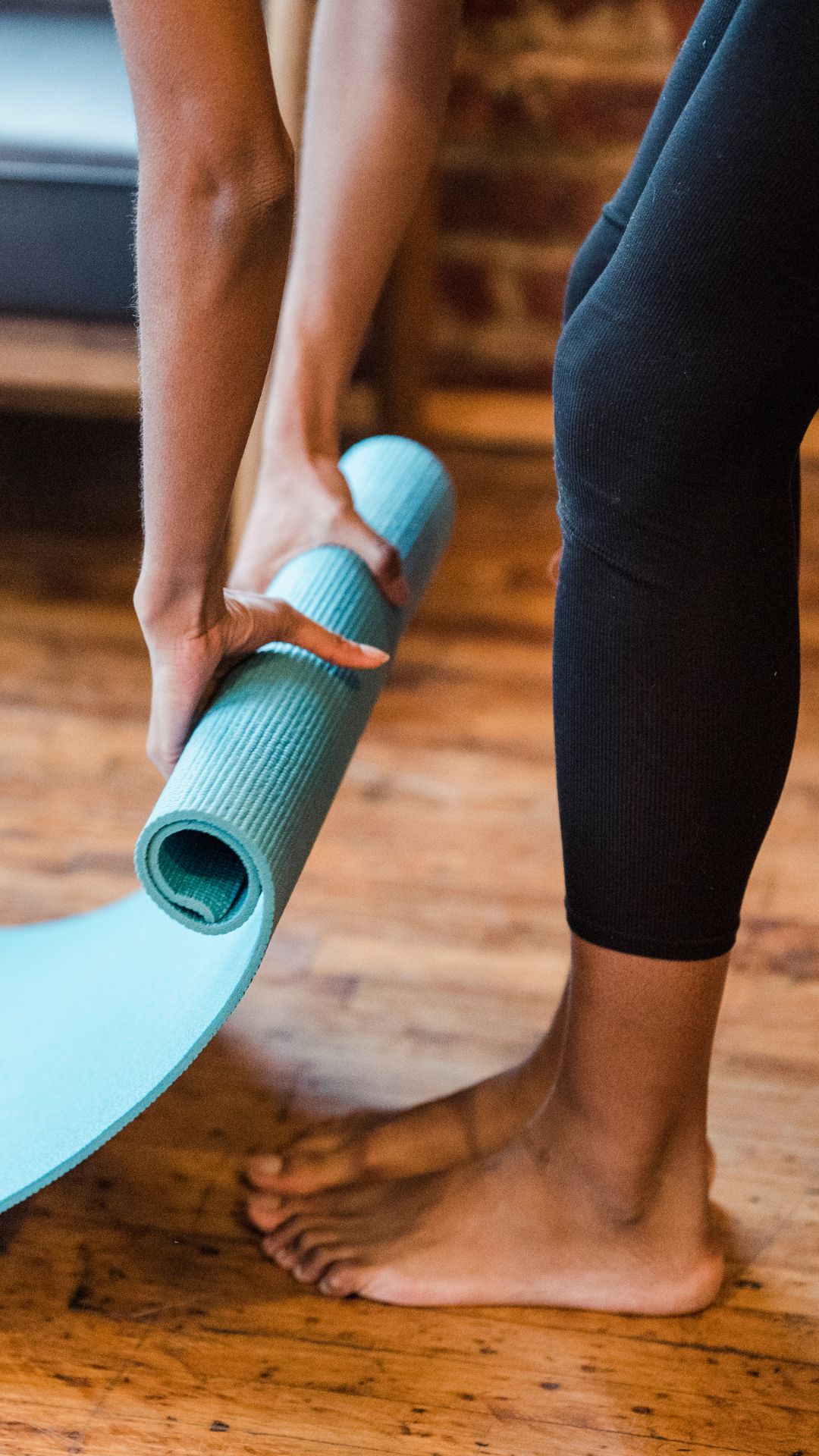I welcomed a 38 year old mother to my hackney unit E2 who found me on a google search. She gave birth to a healthy boy by vaginal delivery with forceps and an episiotomy.
She noticed leakage a few weeks after giving birth when she would sneeze, cough and would experience incontinence. So, like most new mothers with all good intention, she downloaded the Kegel exercises app and set a timer to make sure this is done.
Obviously, navigating your first child is a full time job as all parents know. The first thing that goes out of the window is sleep and despite all good intentions to start doing Kegel exercises, she admits she was haphazard with it all in the beginning and just hoped that with time this will improve. Five years down the line, she was running after her little one, going to trampoline parks and parties and unable to do these activities without feeling like she needs to go to toilet. She then continues and has a small accident after which she felt very embarrassed.
She had seen other mothers going back to doing exercises like Barry’s boot camp, F45 and yoga sessions while she felt unable to do any of these activities. She just felt that something wasn’t right and that there was more to it than simply needing a stronger core.

Understanding bladder leakage
We started the initial assessment discussing what the childbirth was like and how her recovery was. She explained she lost a lot of blood during delivery and took a long time to recover, also having an episiotomy because baby’s head was stuck, and they didn’t want her to tear. She assumed that had all healed well and didn’t realise this could be an issue 5 years down the line.
She then said it felt like she’d lost all awareness around her stomach and pelvis like it was out of place or not in synchronicity with the rest of her body. She said it just felt off when she was trying to get on with her day which I thought was an amazing self-evaluation and awareness of her body.
Most people just say they feel weak, tight, or restricted and just want to get strong, assuming that will sort all their issues. Sothis was a great start and I was keen to work through the process of getting to the bottom of her issue.
As we continue our conversation, we discussed the car accident she mentioned on her medical questionnaire. When she was a teenager, the car she was traveling in collided with another car at speed, flipped over and landed upside down. She felt bruised and strange for a while but didn’t see any therapist because she walked away from the incident and thought all was okay.
She reports occasionally noticing her left hip/ pelvis was out of place but would do stretches and core work and all would balance out. I knew this would be having an impact on today for sure, history shows us that the past will have an impact on the future.
Physiotherapy Assessment
The next stage of the assessment was to assess her static pelvic position when she was standing. What was her natural standing position in a side view, frontal and rotational view? Understanding what position her pelvis bones are in is key to building her pelvis awareness and knowing how to help her heal, because we can then asses what position the muscles and spine is in. Is her abdominal muscle in a lengthen position or shorten position? Is her spine stuck in extension or flexion?
Standing Assessment
Using bony landmarks, we were able to asses her pelvic alignment in a three dimensional motion. Frontal view left hike pelvis, side view anterior tilt pelvis and rotational right.
She was in a position we call hip hike pelvis on the left. The outcome of this position is that it creates a side bending shape into her spine, a concave curve, so we have some muscles that are long and some that are short.
In my opinion it’s important to know what shape your patient is holding themself in. Is it an acquired shape due to trauma caused by a car accident or a structural issue that her body has gone into due to the pregnancy?

Movement assessment
In a standing positing, I showed her some movements and shapes which she was unable to perform. This showed that there was a recruitment patterning issue which is like she is missing a few steps in an algorithm and is unaware of how to move these segments and sequence to her right / right space.
On the verbal prompt,s my client thought she was able to execute the motion until we got in front of a mirror and she saw she was moving like a rigid block rather than segmentally flowing motion. She was unable to get her pelvis over to the right.
We should all be able to segmentally move our pelvis and spine from left to right and organise our body to counter balance so we don’t fall over. We should not just move in one block because that will cause irritation and pathology issues in the future, leading to a feeling of being unstable and many more accidents such tripping or losing your footing stepping over objects.
When turning on a car engine, a sequence of events needs to occur and if that does not happen the car does not switch on and this is just like the body. The only difference is that the body has many ways to adapt which is great but sometimes it is not really the adaptation we need to carry out daily task but is just enough.
My client was functioning well, working and looking after her family just when she tried to do a bit more the body was informing her that something is not doing what it needs to do and that she must pay attention to her bladder. It wasn’t failing her, it was being efficient and telling her to pay attention.
Manual Treatment and Movement Sequences
Her physiotherapy treatment session onvolved using low level Maitland Lumber mobilisation techniques to aid bending and rotation movements into the spinal segments. This was continuous throughout our sessions, until she managed to build up awareness and recruitment through the movement’s sequences.
I then introduced dynamic neuromuscular stabilisation sequences to build the right patterning for her to become aware of her hip, pelvis and lumber spine sequence especially on the right side.
This would encourage her body to make the adjustment and her body to experience what it’s like to move her body to the right on the floor before we got her into a standing, more functional position like picking her little one up and bending.
Dynamic mobilisation stabilisation drills I introduced throughout our time together were Lumber / pelvic 90/90 position, quadruped position, knee lifts, focusing on pulling up from toes and hips to get her lumber and pelvis to move into anterior and posterior tilt position and using long and short levers to flex and extend her spine.
I used Myofascial slings in a 90/90 position to introduce rotational sequences to the thoracic spine and to the lumber spine to do the opposite motion to the thoracis spine.

Home Exercises – Movement Sequences
Throughout the weeks and months, we enhanced her motor patterning to get her body to recognise and execute the right sequence of events when she is getting up from the floor. We then progressed to a standing position and combined drills on the floor to transition into standing.
We were upgrading her recruitment pathway by compounding everyday movements sequences and making them fit into smaller sequences so she and her body can understand these building blocks. We are too quick to upgrade into lunge sequence and squats movements that are too big for most people to do. Keeping the sequences give the body and the patients the ability to really understand the mechanics of the movement so they can execute it effectively.
It was like a re-education session with Kevin every time we had a session. It was like I was learning a new language.
This was an eye opener for how past trauma can have such an effect on your body. It was not just the birth of my son, but the car accident has just compounded the issue and played out into a leaking bladder.
Within a small space of time my awareness of the issue was less and over the time I have worked with Kevin a few months later, I can confidently chase after my little one and jog for a bus without feeling like I am going to have a big accident.
Conclusion
As my client said, she had a disconnect with this part of her body and it’s my job to find the WHY. We are all great at giving things a label but what does it mean and what is the cause?
In my client’s case, it was a need for re-education on the right sequences that were lost due to her pregnancy and past trauma.
The end goal was a better understanding of her body, which we achieved and she was able to move her pelvis to the right and left plus her spine was able to counterbalance, keeping her eyes on the horizon. By upgrading her movement capacity and understanding, her pelvic floor muscles also had to adapt to these changes and this led to less leakage during certain activities. She still has symptoms but not as pronounced. She is not cured but healing and the better she gets at executing the movement patterns and upgrading her movement capacity, the more the deep core muscles will adapt which will influence her bladder even more. The more you keep upgrading your movement sequences, rather than just focusing on strengthening drills alone, the better your bladder control will be.
If you are experiencing bladder leakage, you don’t have to live with that. Get in touch to book your initial assessment and let me help you resolve the issue by discovering the root cause.
